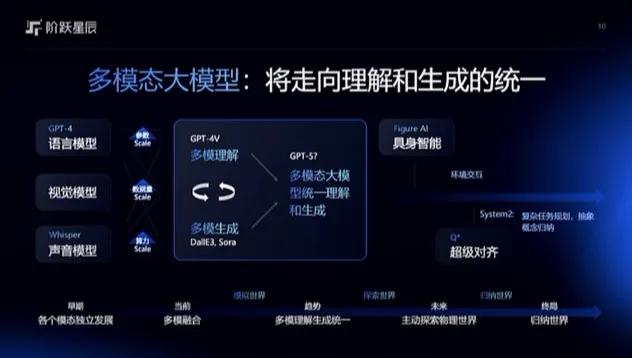Technical Breakthroughs and Commercialization Exploration of Domestic Large AI Models
![]() 07/17 2024
07/17 2024
![]() 520
520
Edited by: Meimei
Domestic AI large models may be just half a year away from matching GPT.
Domestic large AI models are rapidly emerging as a force to be reckoned with in the global AI field. With continuous breakthroughs in deep learning technology, these models have demonstrated astonishing potential in various fields such as natural language processing and image recognition. They have not only driven the rapid development of AI technology but also played an increasingly important role across industries.
However, with the rapid iteration of technology, domestic large AI models also face unprecedented commercialization challenges.
Technological Innovation and International Competition
On the global AI arena, domestic large models are catching up at an astonishing pace, gradually narrowing the technological gap with industry leader OpenAI. According to the latest data, this gap has been significantly shortened to around half a year, marking a leap forward for domestic AI technology.
Taking Alibaba's Qwen series as an example, its latest open-source Qwen2-72B instruction-tuned version has topped the international open-source model rankings, surpassing many internationally renowned models, demonstrating the superior technical accuracy of domestic large models. Huawei's Pangu large model 5.0, with its deep understanding of multi-modal data in the physical world, has been applied in over 30 industries and more than 400 scenarios, proving the strong industrial implementation capabilities of domestic large models. iFLYTEK's Spark large model V4.0 not only ranks first in 8 out of 12 mainstream tests among large models in both Chinese and English, but also surpasses international advanced levels in multiple dimensions such as text generation and language understanding.

It is worth mentioning the development of domestic large models in multi-modal capabilities. Tencent's Hunyuan large model, with its Di-T architecture, has taken the lead in the global multi-modal large model field. And Jieyue Xingchen's 1T-MoE multi-modal large model demonstrates industry-leading capabilities in image generation and multi-modal perception. These advancements not only enrich the application scenarios of AI technology but also give domestic large models a unique advantage in global competition.
Dual-track Development of Open-source and Closed-source Models
The dual-track development strategy of open-source and closed-source models provides dual impetus for the technological innovation and industrial application of domestic large models. Open-source models, with their open and shared characteristics, accelerate the iteration and innovation of AI technology. For example, Alibaba's Qwen series, through open-sourcing, has not only attracted widespread attention and contributions from global developers but also promoted rapid technological evolution and optimization. Another advantage of open-source models is their flexibility, enabling customized adjustments and optimizations based on the needs of different industries and scenarios.

Closed-source models, on the other hand, demonstrate customized advantages in specific industrial applications. Taking Huawei's Pangu large model as an example, its closed-source nature allows for in-depth customization for specific industries, meeting the personalized needs of industry customers. Another advantage of closed-source models lies in their security and professionalism, enabling them to provide more professional and efficient services while protecting intellectual property rights.
Through specific data and examples, we can see the performance and market acceptance of different models. For instance, iFLYTEK's Spark large model V4.0 has performed exceptionally well in multiple mainstream tests of large models both domestically and internationally, surpassing international large models in capabilities such as text generation and language understanding. In terms of market acceptance, Baidu's ERNIE Bot boasts a user base of 300 million with daily invocations exceeding 500 million, demonstrating its widespread recognition and application in the market. This dual-track development strategy of open-source and closed-source models not only enriches the ecosystem of domestic large models but also provides more possibilities for the future development of AI technology.
Commercialization Challenges and Market Potential
Behind the technological progress of domestic large models, the road to commercialization is not without obstacles. Despite their significant achievements in performance, the current status and challenges of commercialization cannot be ignored. In June, there were 75 successful bidding projects related to large models, with disclosed bidding amounts reaching 138 million yuan. While this figure is impressive, it is still insufficient compared to the enormous R&D investments.

Taking Baidu and iFLYTEK as examples, their R&D expenses in 2023 were 24.2 billion yuan and 3.481 billion yuan, respectively, with a considerable portion invested in large model development. The gap between investment and output highlights the difficulties faced by domestic large models in the commercialization process.
The outbreak of price wars has further exacerbated this challenge. As companies like ByteDance significantly reduce Token prices, large model prices have entered the so-called "cent era," undoubtedly putting pressure on the profit model and sustainable development of the entire industry. While price wars may attract users in the short term, how to balance costs and benefits and find a sustainable business model in the long run is a question that domestic large model manufacturers need to ponder deeply.
However, challenges also present opportunities. The user acceptance and market potential of domestic large models cannot be overlooked. Taking Baidu's ERNIE Bot as an example, its user base of 300 million with daily invocations exceeding 500 million provides a vast market space for domestic large models. By further optimizing user experience and enhancing product usability and practicality, domestic large models have the potential to occupy a larger market share.
On the path to commercialization, domestic large models need to place more emphasis on market demand and user experience, based on technological innovation. Through continuous exploration and adjustment, they can find a sustainable development path that suits them.







